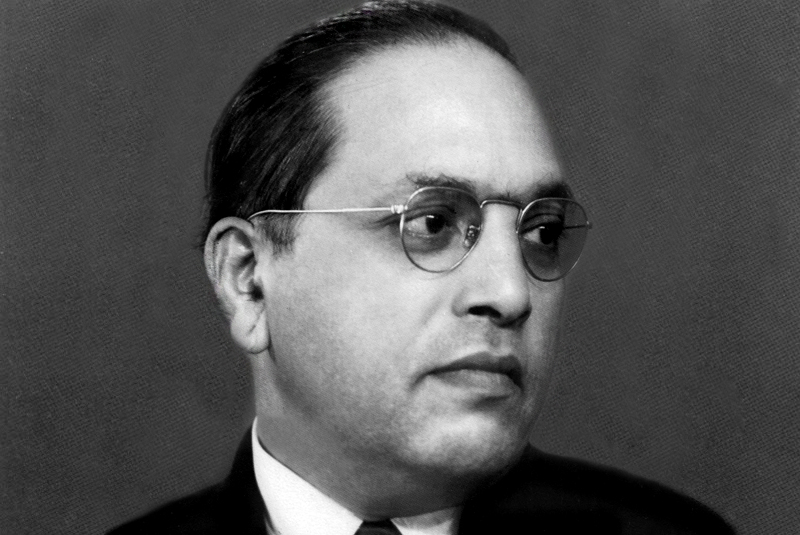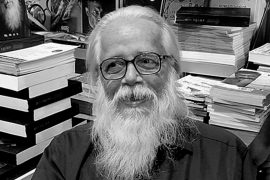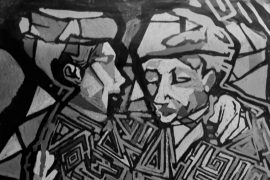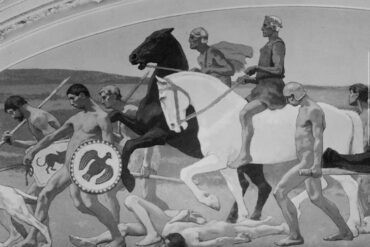At the age of 23, B.R. Ambedkar travelled to the United States with a scholarship to attend Columbia University for a Master’s in Economics. In the United States, Ambedkar lived close to Harlem and was a first-hand witness of anti-Black racism in the United States.
In the 1940s, Ambedkar reached out to W.E.B Du Bois, a prominent African American activist and intellectual. In a short exchange, Ambedkar referred to Du Bois’ fight against racism as ‘the cause of securing liberty to the oppressed people’ and introduced himself as an ‘untouchable of India,’ drawing the parallels of the struggle in the discriminatory systems of India and the United States.
Writing from Bombay, Ambedkar found similarities in the fight against racism in the United States of America and the battle against casteism in India. He wrote:
There is so much similarity between the position of the Untouchables in India and of the position of the Negroes in America that the study of the latter is not only natural but necessary.
The letter intended to inquire about a petition filed to the United Nations by the Negroes of the United States. Ambedkar seemed to want to understand the process in order to take similar steps for the Untouchables of India.
On 31 July 1946, Du Bois respectfully wrote back to Ambedkar. His letter enclosed details of the petition. Du Bois acknowledged Ambedkar and his role in the upliftment of the Untouchables of India and expressed ‘every sympathy’ with them.
The letter was short and sweet but expressed clear acknowledgement of parallels between the struggles of two communities oceans apart. The struggle for equal rights and the fight against discrimination based on Caste in India had piqued Du Bois’s interest for a long time. Like him, many have pointed to the similarities in the struggles of the caste system and racism over history; however, many have called the two systems similar and even the same.
Recognising the basic fundamental differences between the two oppressions is essential to be well-informed and respectful of each struggle. While both systems result in a hierarchy with tyrannical exploitation of those at the bottom of the pyramid, the two are distinctly different. Casteism has been practised over millennia in India and is rooted in a religious background, unlike racism, which is based on the theory of a superior race.
The caste system is based upon ‘hereditary monopoly’ rather than competitive opportunism like in the United States. Racism arose from the need to support the institutions of slavery, exploitation of labour, and to keep Black Africans as free-serving labourers. Caste was assigned as the primary occupation of the people and gave no possibility of vertical mobility in it. The person is identified by the work they do.
Dalits, previously known as the Untouchables, are in the lowest position in the ‘four-tier’ caste system. The notion that the Dalit community is ‘impure’ creates a divide between them and the other castes. Within the caste system, Brahmins claim, without any logical or rational justification, to be on the top. However, Dalits are discriminated against by all the castes.
On the other hand, ‘impurity’ or ‘inferiority’ was a result of racism, not the cause. One single race (Caucasian) is viewed as ‘superior’ to all the others. Hence, people not from the ‘superior race’ are viewed as lesser than or inferior.
Race, a classification based on physical traits, is different from Caste, where one group may not be distinguished by their physical features. Unlike racism, caste discrimination is practised amongst the people of South Asian ethnicity and plays within the same nation. People of the same ethnicity are discriminating against one another. People could not even determine the difference in their Caste without knowing their last or family names.
Despite the differences, the caste system has often been used to find relativity in the experiences to understand the relationships between the oppressor and the oppressed across the globe. It also becomes a way to extend empathy and solidarity for one another, unite the causes to fight against all the oppressors and learn from the historical and social reforms brought by one another.
While Ambedkar and Du Bois empathised with each other’s cause, Ambedkar’s letter shows that he aimed to draw inspiration from the steps taken by National Negro Congress to fight racism. It is pertinent to note that Ambedkar became a prominent Dalit leader who was invited to serve as the first Law Minister of India. He headed the constituent assembly as the chairman and drafted the constitution of India.
Similarly, in 1972, Dalit Panthers emerged, taking inspiration from the Black Panthers. In their manifesto, the Panthers underlined their inspiration:
From the Black Panthers, Black Power was established. We claim a close relationship with this struggle.
When Martin Luther King visited India with his wife, Coretta, he also saw similarities in the struggles of the lower castes Indians and Black Americans. A fan of Gandhi, King wanted to see the ‘untouchables’ and visited a high school of low-caste students in Kerala. The principal introduced King as a ‘fellow untouchable from the United States of America.’
At first, King was upset, not understanding what he had to do with the caste system. ‘I was a bit shocked and peeved that I would be referred to as an untouchable,’ King had said.
After giving a bit of thought, King was able to see what the principal meant: the society caged the financial advancement of African Americans, who were placed at the lowest rank in the racial hierarchy of the United States, just like Dalits, who were chained with limited opportunities to prevent them from reaping social and financial benefits in the country.
‘Yes, I am an untouchable, and every negro in the United States of America is an untouchable,’ King had realised. In her article, the journalist Isabel Wilkerson stresses these similarities in a way that it seems that racism is the caste system of the West. However, equating racism and the caste system without acknowledging the differences runs into the danger of turning a blind eye to the very different horrifying experiences of the victims of two different systems.
The differences are central to the experiences of slavery of Black Americans in history and of the systemic racism faced in the United States. It is also these differences that make the isolation of Dalits from society, literal untouchability, and the violence faced by them today experiences unique to casteism. These differences in experiences, distinctive in their way, must be recognised. However, they can still create multi-ethnic empathy and find support as a larger community of the oppressed in a system of social discrimination.
-30-
Copyright©Madras Courier, All Rights Reserved. You may share using our article tools. Please don't cut articles from madrascourier.com and redistribute by email, post to the web, mobile phone or social media.Please send in your feed back and comments to [email protected]











